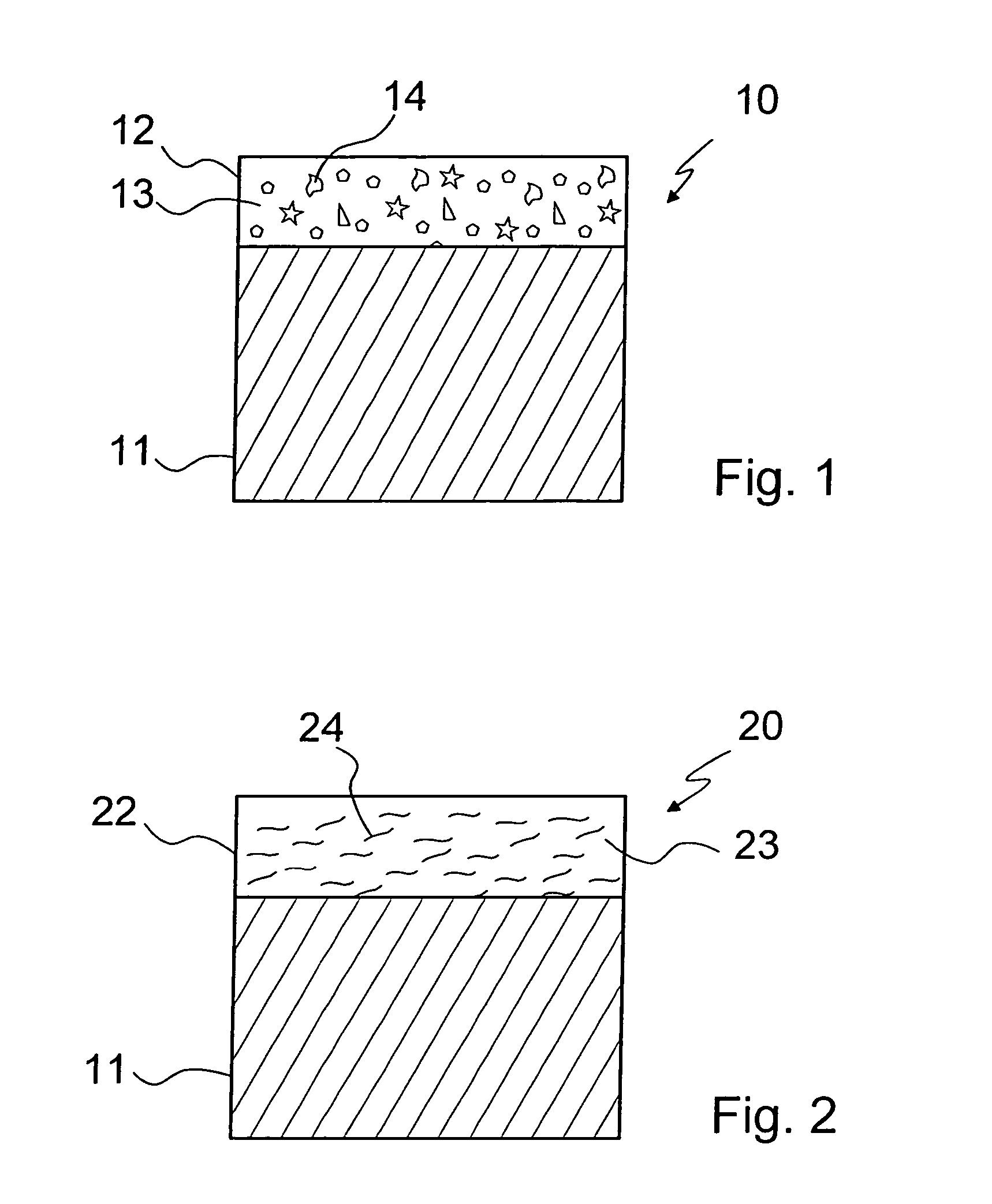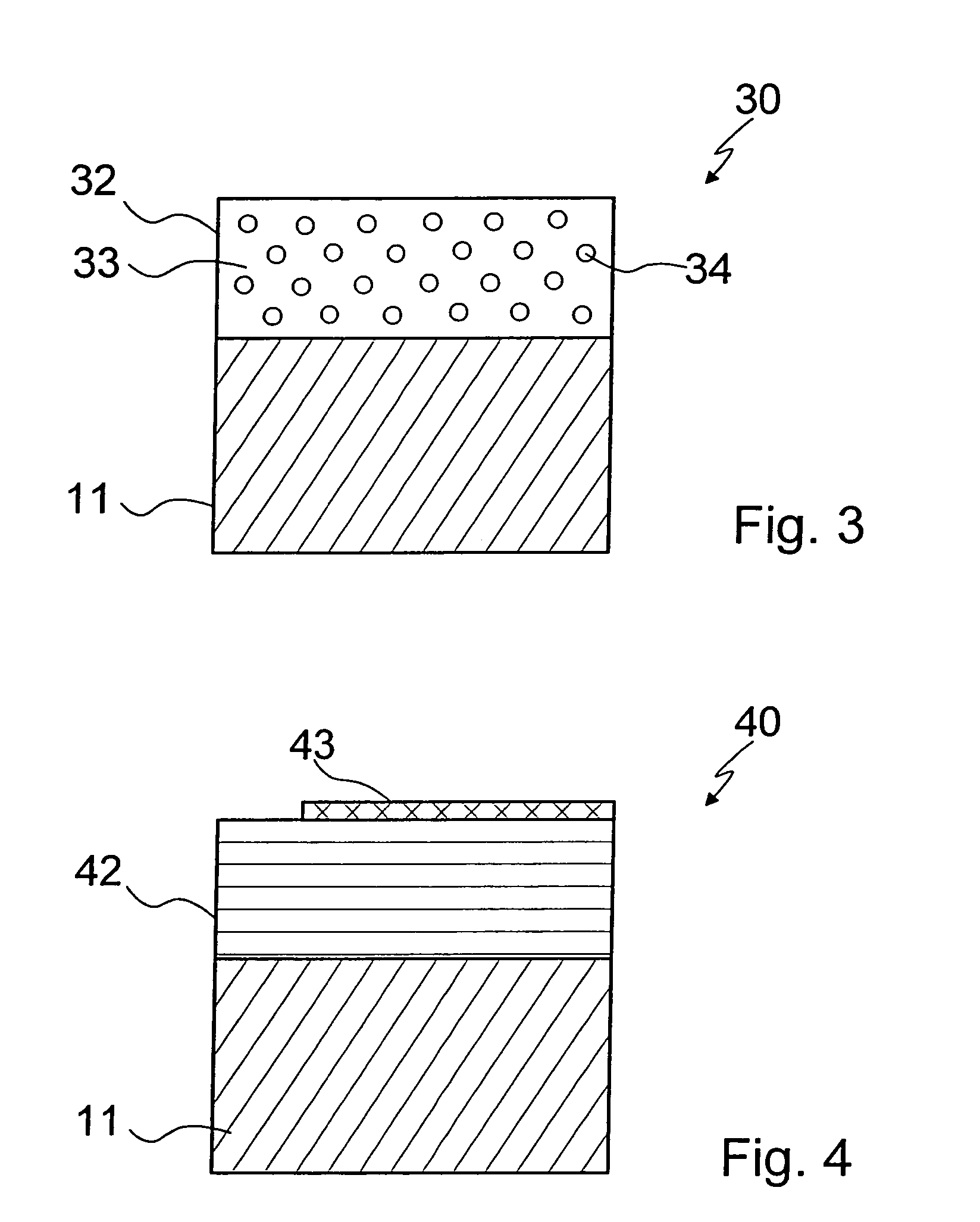Electrical contact
a technology of electric contact and contact plate, which is applied in the direction of coupling contact members, coupling device connections, transportation and packaging, etc., can solve the problems of friction corrosion, failure of electric automobile components associated with contact, and increased oxidation, so as to reduce friction coefficients and increase wear resistance
- Summary
- Abstract
- Description
- Claims
- Application Information
AI Technical Summary
Benefits of technology
Problems solved by technology
Method used
Image
Examples
Embodiment Construction
[0033]FIG. 1 schematically illustrates a surface of an electric contact 10, which is a contact of a plug-in connector for use in an automobile.
[0034]Electric contact 10 includes a substrate 11 which is manufactured from a copper-based alloy such as CuSn4, CuNi2Si or the like. Substrate 11 has a thickness of between 0.1 mm and 0.5 mm.
[0035]A contact layer 12 is applied to substrate 11 by an electrolytic method. Contact layer 12 has a layer thickness of between approximately 1 μm and 3 μm and has a matrix 13 made of tin. Hard particles 14 of aluminum oxide Al2O3 having a particle size of between 20 nm and 200 nm are distributed, i.e., “dispersed,” in matrix 13. Contact layer 12 thus represents a solid-state nanodispersion.
[0036]FIG. 2 schematically illustrates an electric contact 20, which is also a contact of a plug-in connector for use in an automobile.
[0037]Similar to the electric contact of FIG. 1, electric contact 20 includes a substrate 11 which is made of a copper-based alloy.
[...
PUM
| Property | Measurement | Unit |
|---|---|---|
| size | aaaaa | aaaaa |
| size | aaaaa | aaaaa |
| thickness | aaaaa | aaaaa |
Abstract
Description
Claims
Application Information
 Login to View More
Login to View More - R&D
- Intellectual Property
- Life Sciences
- Materials
- Tech Scout
- Unparalleled Data Quality
- Higher Quality Content
- 60% Fewer Hallucinations
Browse by: Latest US Patents, China's latest patents, Technical Efficacy Thesaurus, Application Domain, Technology Topic, Popular Technical Reports.
© 2025 PatSnap. All rights reserved.Legal|Privacy policy|Modern Slavery Act Transparency Statement|Sitemap|About US| Contact US: help@patsnap.com



